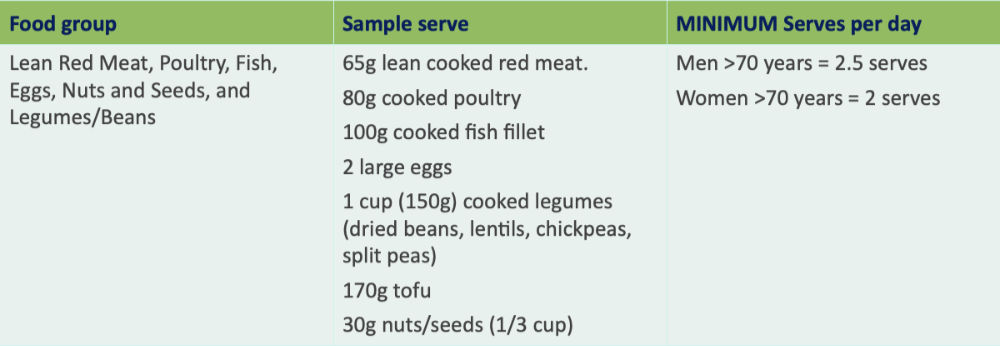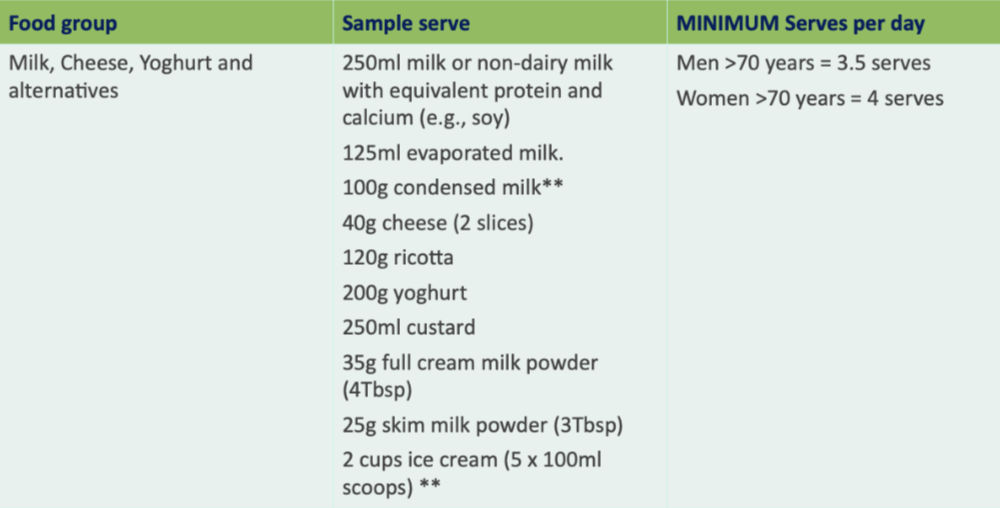

As part of the new AN-ACC funding model, many homes will now also be required to complete the Braden Scale for Predicting Pressure Sore Risk to determine the residents’ needs in your home.
In the nutrition section of the Braden Scale assessment tool, you will need to assess:
The Australian Guide to Healthy Eating outlines what a serve of meat/alternatives should be. Refer to the following table.

Breakfast:
2 large eggs at breakfast is the equivalent of 1 serve of meat.
Bacon or sausages (x1 sausage or x2 chipolata) provides 0.5 serves of meat.
Baked Beans (1/2 cup or 75grams) provide 0.5 serves of meat.
Lunch and Dinner:
Ideally, the serving size of protein i.e., meat/fish/chicken/eggs provided at lunch and dinner are ~90-100g (the size of your palm or a large scoop for texture modified meals) This equates to 1-1.5 serves of meat per meal.
In a meat-based sandwich, a 50g serve of meat or protein alternative should be provided. This equates to 0.5 serves of meat.
Note that for your residents who make vegetarian choices, much larger portions are required. 1 cup lentils/ pulses/legumes/ baked beans/ 170g tofu = 1 serve meat.
Dairy is an important source of protein for older adults. A serve of dairy is described in the table below.

Breakfast:
Providing cereal at BF will contribute to your resident’s dairy intake. 150mls milk = 0.6serves of dairy and 100g yoghurt provides 0.5 serves dairy.
Mid-meals:
If cheese and crackers are offered, this contributes 0.5 serves of dairy from cheese (where the serving size is a 20g slice of cheese.
If yoghurt is offered this contributes 0.5 serves of dairy (where the serving size is ~100g).
If custard is offered this contributes 0.5 serves of dairy (where the serving size is about 1/2 cup or 125mls)
Meals:
In a cheese sandwich, a 20g serve of cheese provides 0.5 serves of dairy.
Desserts:
A dairy based dessert such as a mousse (50g), yoghurt (100g), panna cotta (100g) provides 0.5 serves of dairy.
A piece of cheesecake (100g) would usually provide 1 serve of dairy.
A regular scoop of ice-cream only provides 0.2 serves of dairy.
Fluids:
A 200ml glass of milk provides 0.8 serves of dairy.
If you would like any help answering the nutrition questions outlined in the Braden Assessment tool, please contact your Food Solutions Dietitian for support.